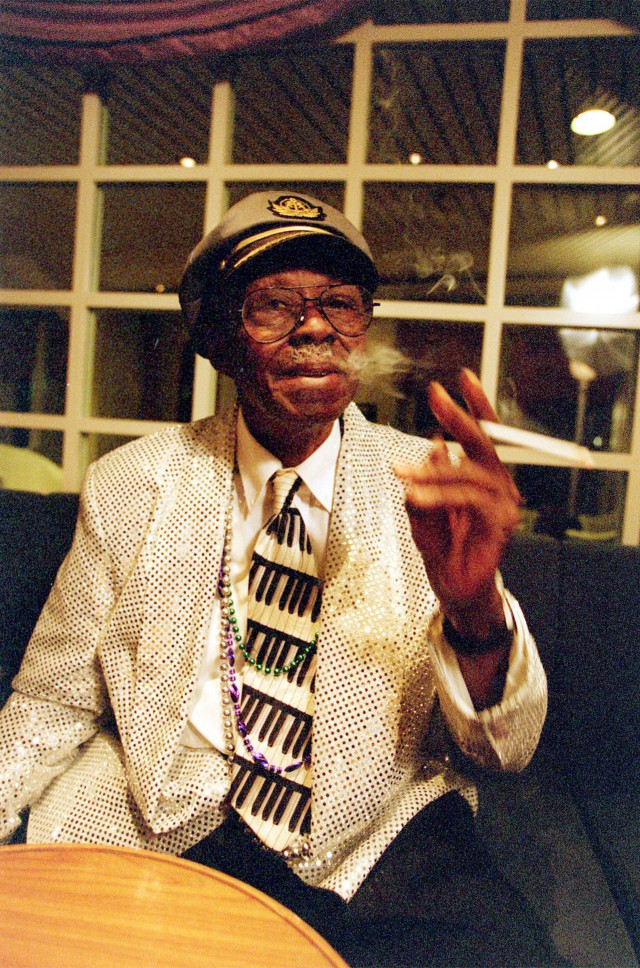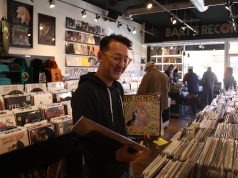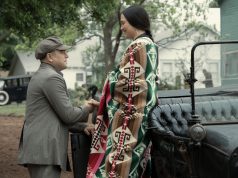
Born on a cotton plantation near
The barroom attack tore his tendons and cut his
bone, ending his dreams of becoming a leading guitar man. Instead, he
refashioned himself as a regal piano player.
And at 97, he stood as one of the last of the original Delta blues musicians still touring the country.
Perkins died Monday of cardiac arrest in
“He was absolutely the premier blues piano player,” said
Alligator Records, an independent blues label. “His career spanned
literally over 80 years. He was the symbol of a whole generation of
musicians.”
But he was no nostalgia act, Perkins’ easygoing
keyboard virtuosity just last month winning him a Grammy Award for best
traditional blues album, for “Joined at the Hip: Pinetop Perkins &
Willie ‘Big Eyes’ Smith.”
That made him the oldest Grammy winner, the honor
augmenting his 2007 Grammy for his work on “Last of the Great
Mississippi Delta Bluesmen: Live in
Perkins’ influence was vast and his musical pedigree impeccable, for he collaborated with all forms of blues royalty, from
Through it all, and despite the exigencies of age, he maintained an
enduring mastery of the piano. Last year, his fingers flew over the
keyboard during a packed-to-capacity show in
Perkins not only ignited the music but clearly drove
the band. Though he showed less digital prowess than in his artistic
prime — which, in his case, would have been when he was a mere
octogenarian — he cleverly worked around his shortcomings, dividing his
technical flourishes between his hands.
It was a brilliant feat, all the more considering the self-taught nature of Perkins’ work.
“I don’t read music; it looks like dog droppings to me,” he told the
But Perkins learned about blues in the best — and
the toughest — way possible: Immersed in the culture that produced it.
Having taught himself guitar at age 10 and the piano a few years later,
to draw upon: He absorbed field hollers picking cotton and learned
blues licks playing the juke joints of the
The tragedy — and turning point — in his musical
life occurred in 1942, when an angry woman mistakenly blamed him for an
offense her husband had committed and swung a blade at him.
“It was a freak accident,” Perkins told the Tribune.
“When she did that, I just said, ‘Well, you just cut me out of my
career, that’s all I can say.’ It was hard to start over. It was kind
of rough, but I just figured out playing the piano the best way I
could.”
Indeed, he played piano with harmonica master Sonny Boy Williamson on the iconic “King Biscuit Time” radio show and with
His caliber of keyboard brilliance had not often
been encountered in blues, his early 1950s recording of Clarence
“Pinetop” Smith’s showpiece “Pinetop’s Boogie Woogie” establishing his
reputation and giving him his famous nickname.
By then he had moved to the
Generations of musicians learned and modeled their art on Perkins, including no less than
“Pinetop would be the birth of rock ‘n’ roll, because he taught me what I played,” Turner told the Tribune in 2004.
For all of Perkins’ influence and experience, he
didn’t cut his first recordings under his own name until the late
1980s, including a contribution to “Living Chicago Blues, Vol. 2”
(Alligator). The recordings and the accolades flowed after that,
including “Portrait of a Delta Bluesman” (
The death of his common law wife,
He was a guy who put a huge amount of humor in his music,” said Iglauer. “When you think of his blues, they made you smile.”
———
(c) 2011, Chicago Tribune.
Visit the
Distributed by McClatchy-Tribune Information Services.














